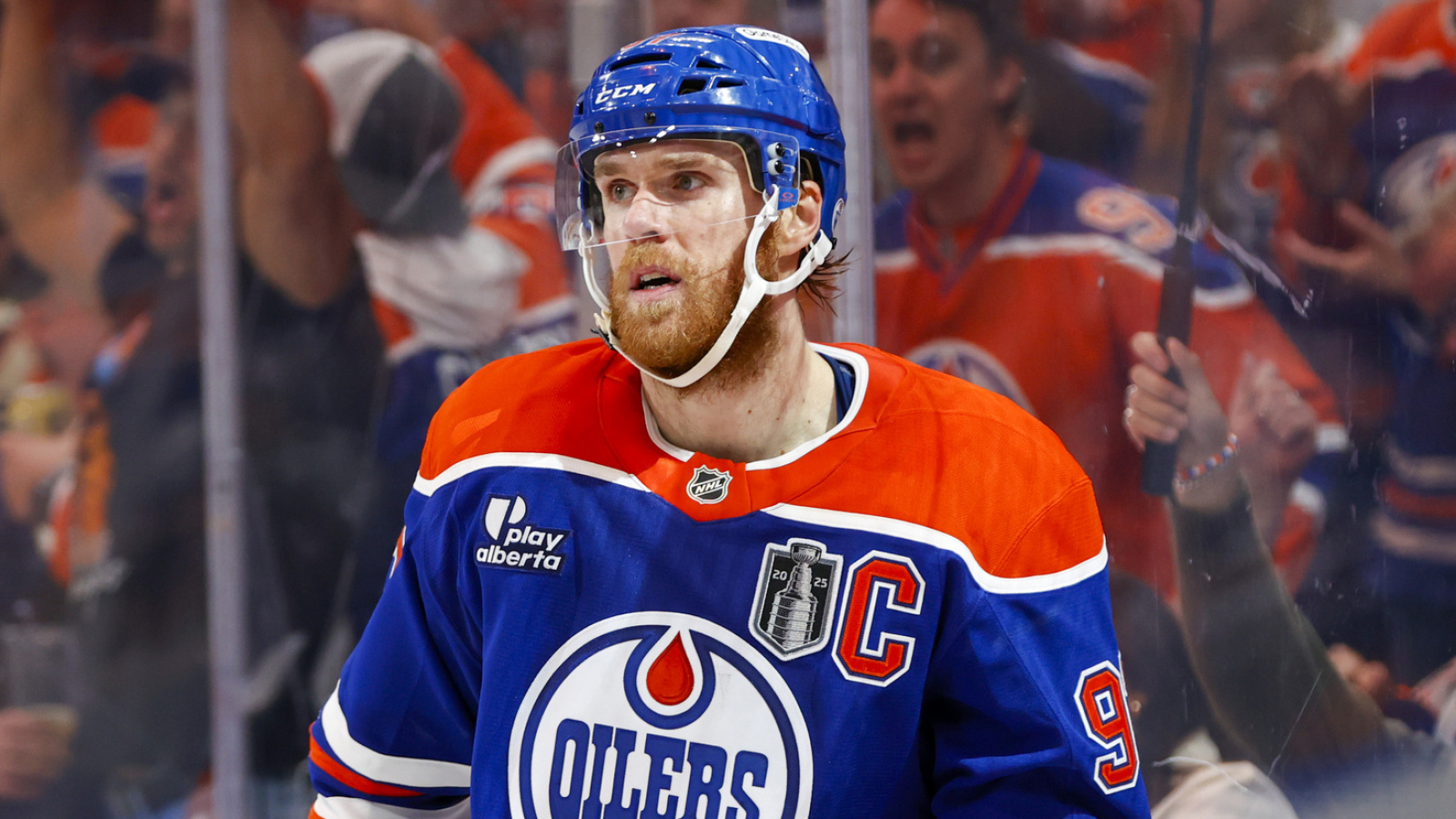
After Minnesota Wild winger Kirill Kaprizov reportedly declined an offer of $16M a season on a long-term deal, fans across the NHL discussed who would be the first player in NHL history to earn $20M annually on a contract. The NHL’s revenue is increasing rapidly, thanks to rising television income, betting revenue and overall global expansion all pushing hockey-related revenue higher. With this growth, teams are more than willing to pay their star players, who drive much of the growth teams are seeing in local ticket sales, sponsorships and, most importantly, the game on the ice.
With rising revenues, fans are curious about what kind of AAV Edmonton Oilers star Connor McDavid could secure if he chooses to become an unrestricted free agent next summer. McDavid will be a free agent on July 1 next year, but he might not be the first to reach that milestone, even though he will be eligible to sign a deal exceeding that figure.
Could Connor McDavid get a $20M/year contract?
With the NHL salary cap rising to $104M for the 2026-27 season, McDavid could sign a deal worth 20% of the total cap, which would amount to $20.8M annually. However, based on his previous contract, it seems unlikely McDavid would do that, as it would leave the Oilers even more constrained by the cap than they already are. Earlier this summer, it was reported that McDavid would sign an extension of unspecified length, with an AAV of around $16M. This would be similar to McDavid’s previous extension, signed in 2017 for $12.5M per season, which was 15.72% of the salary cap at that time. If that $16M AAV applies to McDavid’s next contract, it would represent roughly the same percentage of the salary-cap ceiling as his 2017 extension.
Some folks in hockey circles argue that McDavid should be the first player to surpass the $20M mark, and they might be right. However, it would be tough to build a team if he consumes that much of the salary cap. People used to argue the same whenever Sidney Crosby accepted less money than he was worth, but Crosby’s three Stanley Cup wins likely justified the money he left on the table. McDavid is an interesting case because he already left money on the table last time and has no championships to show for it. He may be willing to do it again as he nears his 30s, knowing that many of the game’s greatest players — like Crosby, Mario Lemieux, Wayne Gretzky and Jaromir Jagr — never won a Stanley Cup after turning 30. McDavid may not be able to carry flawed teams to the Stanley Cup Final if he’s in his 30s and taking up 20% of the salary cap, and that will have to influence his decision on his next contract.
What other players could hit $20M/year?
The next batch of potential $20M players expected to hit the free-agent market next July includes the aforementioned McDavid and Kaprizov, as well as Jack Eichel. This occurs during a period when the NHL salary cap is set to rise by nearly 30% over three years. While this is excellent news for these forwards, it likely won’t come with a $20M AAV. Kaprizov is reportedly trying to get as close as possible to that figure after rejecting a long-term deal worth $16M per season. Although high, that number is expected to become typical among the NHL’s top players, with many stars poised to sign deals above $15M annually.
Eichel has developed into a top-line, two-way center with high-end offensive skills but also elite defensive metrics. He is the most complete player outside of McDavid who could be available next summer, but it is expected that he will sign a long-term extension in Vegas soon, which should be around $13M-$14M annually.
What about the summer of 2027? Are there any potential candidates to earn $20M annually? The short answer is one, possibly two: Colorado Avalanche defenseman Cale Makar and Vancouver Canucks defender Quinn Hughes. Makar has been a Norris Trophy finalist for five consecutive seasons and is a two-time winner of the award. He has exceeded 80 points in three of his last four seasons and 90 points in each of the previous two seasons. He is an offensive powerhouse that any team in the league would want, and with a $113.5M salary-cap forecast for the 2027-28 season, he might receive a $20M offer.
Hughes is also a former Norris Trophy winner, securing the award during the 2023-24 season. He was a finalist last season but doesn’t have the same résumé as Makar and is therefore less likely than him to reach the $20M mark. Two more seasons of Norris-caliber play would go a long way toward securing that kind of money on a long-term deal, but at this stage, he would be a bit of a long shot to hit $20M annually.
Auston Matthews is another possible candidate to be the first player to earn $20M annually, but he faces several hurdles. For one, someone might have signed an extension before Matthews became a free agent. Additionally, Matthews will be 31 when his next contract begins, and it’s uncertain what his game will look like then. There’s also a chance that Matthews’ performance could decline in the coming years, and he may not be able to produce the same numbers he’s used to. Time is working against Matthews in this scenario, and given all of this, he’s probably not going to be the first player to reach $20M annually.
Finally, some of the top young draft picks have entered the NHL. Connor Bedard is a year away from becoming an RFA, and his performance this upcoming season could reveal a lot about the extension he signs, if he doesn’t sign one before the season begins. If he signs now, he’d likely secure a deal around $10M annually. However, if he erupts into a 100-plus-point player, as many expect, he might push closer to a $12M to $15M long-term deal. In any case, he isn’t going to sign for $20M this time, and even if he takes a two- or three-year bridge deal, he probably won’t be the first player to hit that $20M milestone.
Will a $20M/year contract actually happen?
Now that we’ve discussed some of the players who could be the first, we must consider whether it will happen anytime soon. The NHL has a culture of spreading money across the roster, and few teams are willing to go top-heavy because it affects their depth. The Toronto Maple Leafs tried the top-heavy approach for the past decade, and it hasn’t worked out as they hoped. Even Chicago had to adopt it eventually, with Patrick Kane and Jonathan Toews earning $10.5M annually, marking the start of the end for their mini-dynasty. Teams are also reluctant to allocate 20% of their salary cap to a single player, which suggests we might need a much higher cap before a player reaches $20M annually.
It’s going to be fascinating to see how this develops. The NHL has never fully embraced the supermax era that other leagues have adopted, and NHL players have seldom sought the maximum salary for various reasons. The NHL was also uniquely positioned because its top star for 20 years, Crosby, never signed a market-value contract, which makes one wonder if that influenced other stars to accept lower numbers. Crosby is obviously nearing the end of his career and is no longer the top player in the league, opening the door for top talents to claim every dollar they can get. Time will tell if they do.



